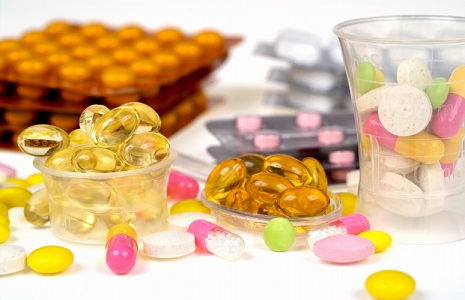Cholesterol is an essential type of fat, it is present in the body and a certain amount is necessary for optimal body functions. Many diets contain cholesterol as well. However, excessive cholesterol present in the body can get deposited in the blood vessels causing narrowing and blockage. This can result in heart attack and stroke. According to Centre for Disease Control and prevention, people with high cholesterol levels are at a greater risk of developing hear diseases.
Cholesterol Levels by Age
The term total cholesterol refers to the total amount of cholesterol in the blood. This mainly consists of different types of cholesterol, which include LDL (Low Density Lipo Protein), HDL (High Density Lipo Protein) and Triglycerides.
LDL and Triglycerides are the bad forms of cholesterol and tend to deposit in the vessels resulting in heart disease and other problems while HDL is the good form of cholesterol which protects against heart diseases. Higher LDL and triglyceride levels are associated with greater risk of cardiovascular diseases.
The following two charts of cholesterol levels by age will help you to get a better idea of a normal range that one should maintain.
Children
Physically active kids with no family history of cholesterol disorders or obesity who take a balanced diet are very less likely to have high cholesterol levels.According to the latest guidelines, all children must get their blood cholesterol levels checked between the ages of 9-12 and then get a repeat test between the ages of 17-21. Children with any risk factors like diabetes, obesity or a positive family history should get these tests earlier, first between the ages of 2-8 and then again at 12-16.
|
Total Cholesterol |
Good: 170 mg/dL or lower Borderline: 170-199 mg/dL High: above 200 mg/dL |
|
LDL |
Good: 110 mg/dL or lower Borderline: 110-129 mg/dL High: above 130 mg/dL |
|
HDL |
Good: 45 mg/dL or higher Borderline: 40-45 mg/dL Low: below 40 mg/dL |
|
Triglycerides |
Good: 75 mg/dL or lower between the ages of 0-9 years; 90 mg/dL or lower between the ages of 10-19 years Borderline: 75-99 mg/dL or lower between the ages of 0-9 years; 90-129 mg/dL or lower between the ages of 10-19 years High: 100 mg/dL or higher between the ages of 0-9 years; 130 mg/dL or higher between the ages of 10-19 years |
Adults
According to the recommendations of American Heart Association everyone should get their cholesterol levels checked after four to six years after the age of 20. If any risk factors are present, these should be checked more frequently.
Cholesterol levels rise with age, increasing the risk for cardiac disease, the risk is greater for men at younger age groups but post menopausal women are at the same risk as men.
|
Total Cholesterol |
Good: 200 mg/dL or lower Borderline: 200-239 mg/dL High: above 240 mg/dL |
|
LDL |
Good: 100 mg/dL or lower Borderline: 130-159 mg/dL High: above 160 mg/dL |
|
HDL |
Good: 40 mg/dL or higher Low: less than 40 mg/dL |
|
Triglycerides |
Good: 149 mg/dL or lower Borderline: 150-199 mg/dL High: above 200 mg/dL |
What Affects Your Cholesterol Levels?
With the charts of cholesterol levels by age, you know that age is an influencing factor. Besides that, your cholesterol levels by will also be affected by other factors such as your diet and lifestyles. Paying attention to these will help a lot in maintaining a normal level.
- Diet: Diet plays a major role in regulating cholesterol levels. Foods which are high in saturated fats increase blood cholesterol levels, reducing the intake of saturated fats and foods rich in cholesterol helps to lower blood cholesterol levels.
- Weight: Weight gain is associated with a rise in cholesterol levels and extra weight itself is a risk factor for developing cardiovascular diseases. Losing weight leads to a decrease in bad cholesterol level and it also causes a rise in good cholesterol of HDL levels.
- Age and Gender: There can be increase in cholesterol levels by age. Men have higher cholesterol levels than pre menopausal women but after menopause the HDL levels become similar.
- Genetics: Some people are more likely than others to develop high cholesterol levels due to genetic reasons.
How to Keep Healthy Cholesterol Levels
1. Burn the Extra Fat
 Exercise is one of the best ways to keep cholesterol levels in check. Regular physical activity and having an active lifestyle helps to burn out the extra fat which can be deposited in the body. Half an hour of aerobic activity like swimming, jogging, brisk walking, cycling or any other forms significantly increases HDL levels offering protection against cardiovascular disease. However,the effect on LDL levels is not very significant.
Exercise is one of the best ways to keep cholesterol levels in check. Regular physical activity and having an active lifestyle helps to burn out the extra fat which can be deposited in the body. Half an hour of aerobic activity like swimming, jogging, brisk walking, cycling or any other forms significantly increases HDL levels offering protection against cardiovascular disease. However,the effect on LDL levels is not very significant.
2. Take the Supplements
 There are certain supplements which are very effective in lowering cholesterol levels. Taking these natural and safe options like niacin, fenugreek and garlic can be very helpful in reducing blood cholesterol levels. The effect of niacin on lowering LDL levels is supported by clinical research.
There are certain supplements which are very effective in lowering cholesterol levels. Taking these natural and safe options like niacin, fenugreek and garlic can be very helpful in reducing blood cholesterol levels. The effect of niacin on lowering LDL levels is supported by clinical research.
3. Change Your Diet
 The best way to have a lower cholesterol level is to reduce fat intake, especially saturated fats. Try to have lean meat and avoid processed meats. Dairy products can be rich in fats so it is better to switch to low fat options. Increased fibre intake and reduced consumption of alcohol is proven to decrease cholesterol levels. Try to have healthy fats found in nuts and seeds. Fish oil is also recommended. Adequate hydration and lower amounts of extra sugar and salt in food is also very helpful.
The best way to have a lower cholesterol level is to reduce fat intake, especially saturated fats. Try to have lean meat and avoid processed meats. Dairy products can be rich in fats so it is better to switch to low fat options. Increased fibre intake and reduced consumption of alcohol is proven to decrease cholesterol levels. Try to have healthy fats found in nuts and seeds. Fish oil is also recommended. Adequate hydration and lower amounts of extra sugar and salt in food is also very helpful.
4. Other Ways to Try
- Quit smoking: Smoking makes the cells membranes more permeable to LDL which leads to an increased deposition of fat in cells resulting in cell damage.
- Work-life balance: It is extremely important to maintain a healthy lifestyle and keep a balance between work and daily life. It reduces stress which is a risk factor for many health problems.
- Breathe deeply: Practice deep breathing on daily basis, taking deep breaths will help you to relax and reduce stress.

